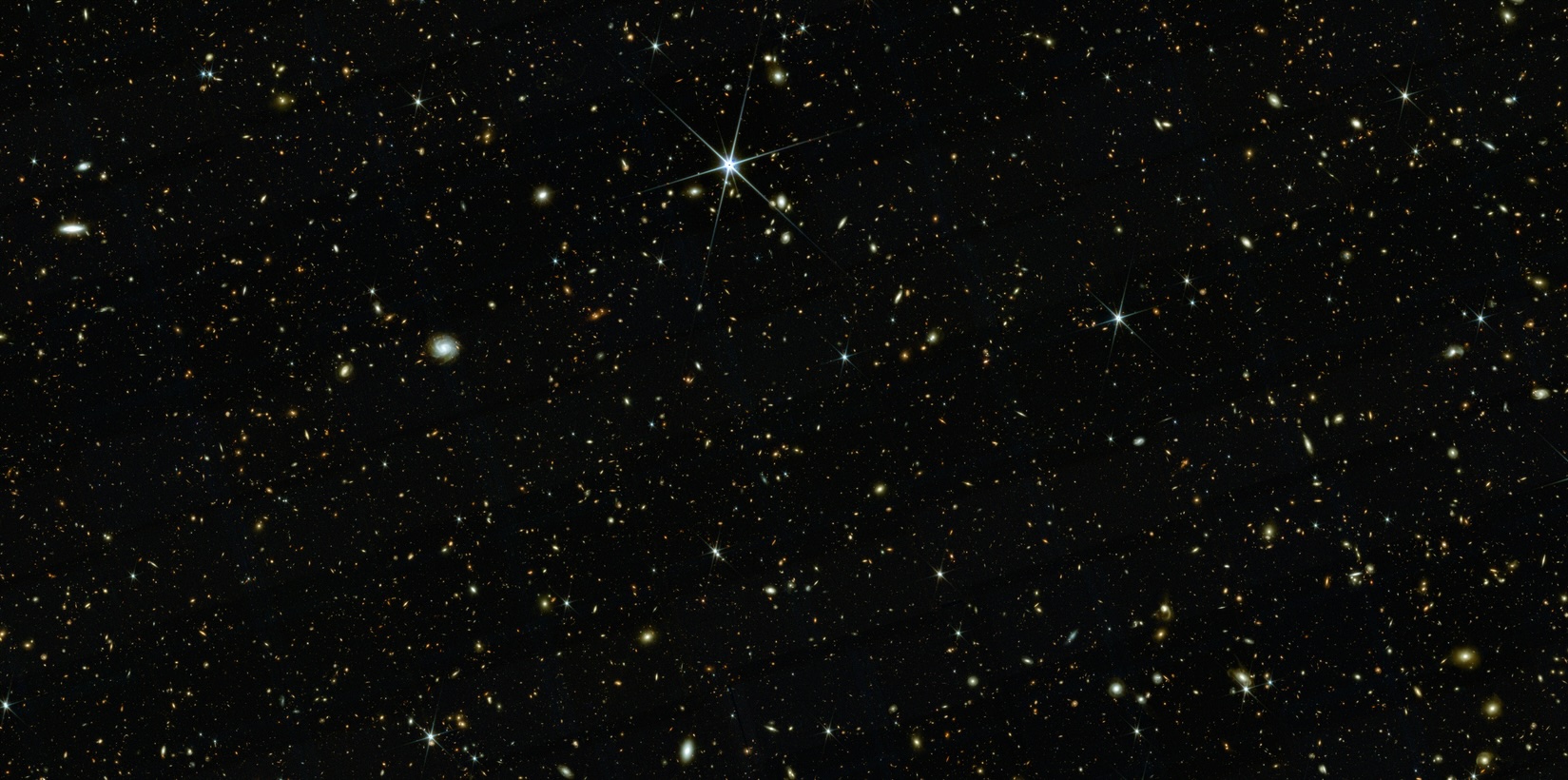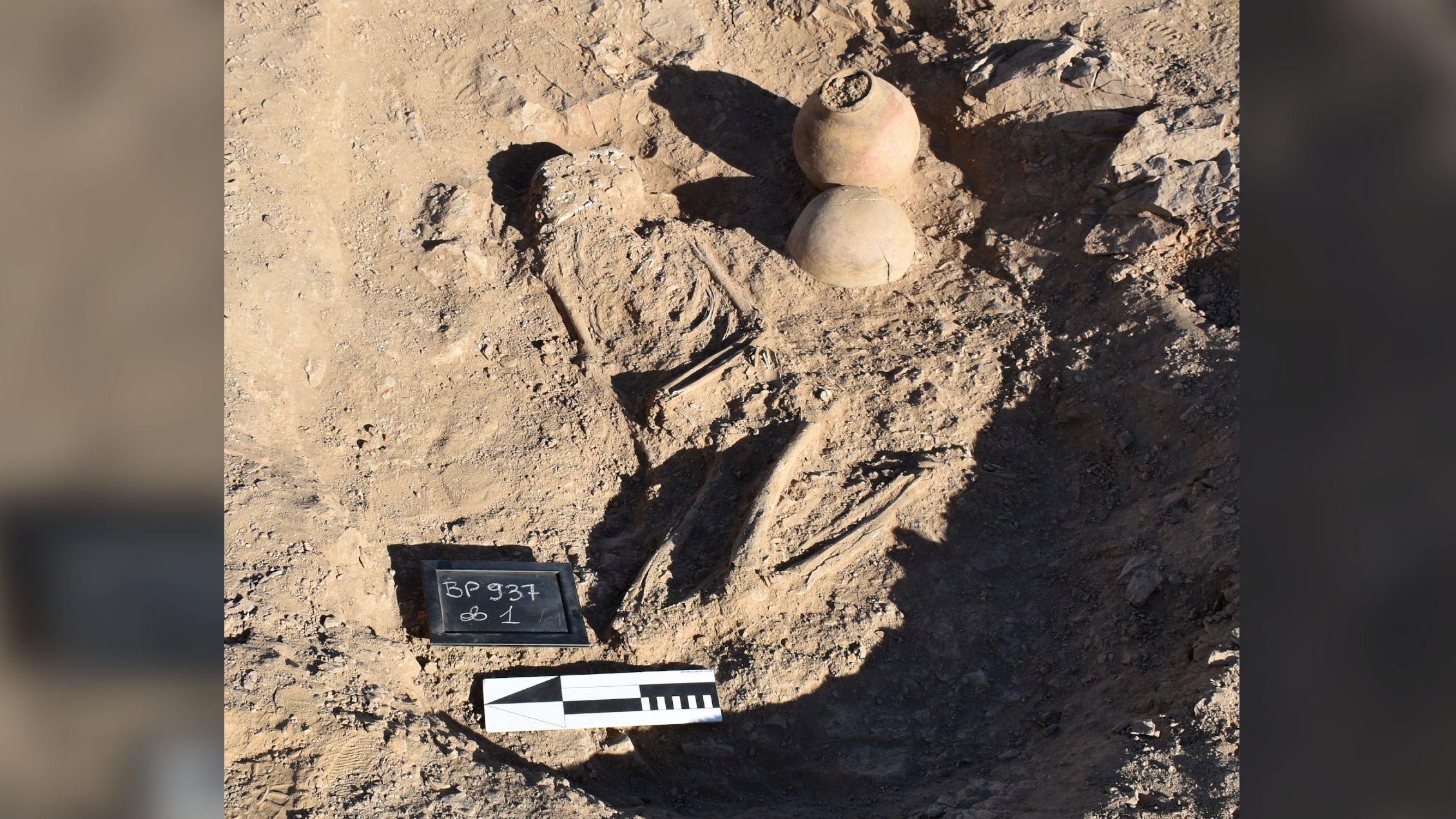James Webb telescope unveils largest-ever map of the universe, spanning over 13 billion years
The largest map of the universe, created with data from the James Webb Space Telescope, shows almost 800,000 galaxies crammed into a tiny piece of sky and spanning almost all of time.

Scientists have unveiled the largest map of the universe ever created. Stretching across a tiny sliver of space and almost all cosmic time, it includes almost 800,000 galaxies imaged across the universe. Some are so far away that they appear as they existed in the infant universe, about 13 billion years ago.
The map, released Thursday (June 5) by scientists at the Cosmic Evolution Survey collaboration , covers a 0.54-degree-squared arc of the sky, or about three times as much space as the moon takes up when viewed from Earth.
To collect the data for the map, the James Webb Space Telescope (JWST) spent 255 hours observing a region of space nicknamed the COSMOS field. This patch of sky has very few stars, gas clouds or other features blocking our view of the deep universe, so scientists have been surveying it with telescopes across as many wavelengths of light as possible.

JWST's observations of the COSMOS field have given us an incredibly detailed view of the universe going back as far as 13.5 billion years.
Because the universe has been expanding, visible light that left its source at the other side of the universe gets stretched out, becoming infrared light. This is why JWST was designed to be an extremely sensitive infrared telescope: to detect these faint, stretched-out signals from the beginning of time that we couldn't see with other telescopes. It's already reshaping our understanding of how the universe formed.

"Since the telescope turned on we've been wondering 'Are these JWST datasets breaking the cosmological model?" Caitlin Casey, a professor of physics at the University of California, Santa Barbara and co-lead for the COSMOS project, said in a statement. "The big surprise is that with JWST, we see roughly 10 times more galaxies than expected at these incredible distances. We're also seeing supermassive black holes that are not even visible with Hubble."
The raw data from the COSMOS field observations was made publicly available just after it was collected by JWST, but it wasn't easily accessible. Raw data from telescopes like JWST needs to be processed by people with the right technical knowledge and access to powerful computers.
Get the world’s most fascinating discoveries delivered straight to your inbox.
The COSMOS collaboration spent two years creating the map from JWST's raw data to make it more accessible for amateur astronomers, undergraduate researchers and the general public to peer into the heart of the universe. You can see it for yourself using COSMOS' interactive map viewer.

Damien Pine (he/him) is a freelance writer, artist, and former NASA engineer. He writes about science, physics, tech, art, and other topics with a focus on making complicated ideas accessible. He has a degree in mechanical engineering from the University of Connecticut, and he gets really excited every time he sees a cat.
You must confirm your public display name before commenting
Please logout and then login again, you will then be prompted to enter your display name.
